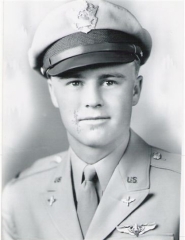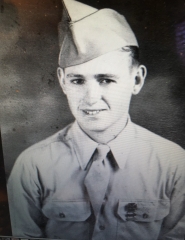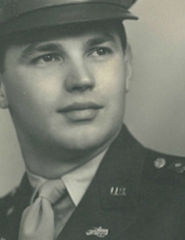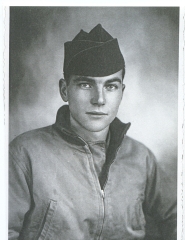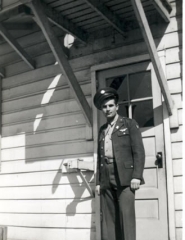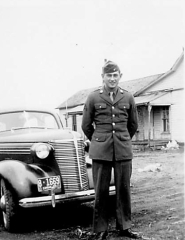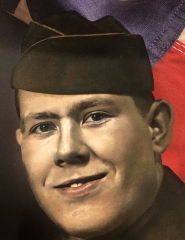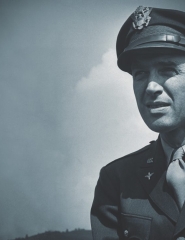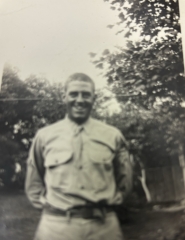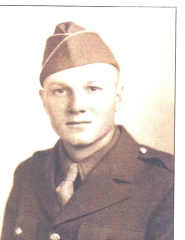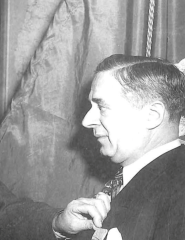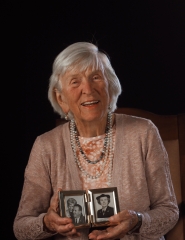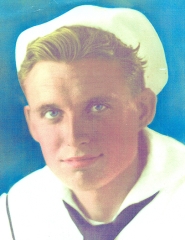In the ranking of America’s legendary business leaders, Henry Crown, an unassuming man of moderate height and build, stands as tall as the Empire State Building which he once owned. No one, and nothing, could keep him down. This creator of vast empires of factories and machines and jobs and wealth was the son of a Russian street peddler. He left school in the eighth grade to deliver groceries. At the height of his powers he ate at the table of presidents, and yet every day he nurtured his lifelong friendships. During a career that spanned this century and culminated in his control of General Dynamics, he became one of this country’s greatest philanthropists. He sat in the most powerful boardrooms in America, and he knew his employees by name and cared about them like family. Henry Crown controlled interests in American industry worth billions of dollars, but the stocks and bonds that were closest to his heart were character, principles, strongly held beliefs, high moral values, honor and integrity. When he died in 1990 at the age of 94, he left a legacy of greatness and goodness hardly matched in the history of corporate America. He was a classic Horatio Alger rags-to-riches story. In 1912 when he was a 16-year-old earning $6 a week as a freight-rate assistant, he enrolled in a night bookkeeping class. The assignment throughout the year-long course was to create a business and keep financial statements. At the end of the year the teacher announced that three students – four if he counted Henry Crown – were correct. 'But Henry,' he said, 'I told you to start the business with $2,000 – not $2 million.' The class burst out laughing, but Henry just grinned. 'Well, sir,' he said, 'I just added the extra zeros, but look how much greater the profit is.' In 1917 when he was 21, Henry and his brothers Sol and Irving launched a building materials brokering company. By 1928 their supply yards were spread throughout Chicago; their barges and tugs plied the rivers and lakes; their trucks were on virtually every construction site in the city. Their company, Material Service Corporation, was strong enough to survive the Great Depression and prepare the way for unparalleled growth and expansion after World War II – and a merger in 1959 with General Dynamics, the nation’s largest defense contractor. But success itself was never the end he sought. For him the possibilities were always endless, the challenges were never fully met. The spirit of entrepreneurial endeavor that set him apart as a teenager never left him, and when he was 70 he proved it – by starting over again. In 1966 in a power play for strategic control of General Dynamics during a crisis, the board betrayed Henry Crown and exercised a merger option to buy him out. Cut off from the business he and his brothers had built over 47 years, he set out to build a new company for his family. In the act of rebuilding, he went back to his roots – buying stock in a small building materials company called Dolese and Shepherd, and investing in a fleet of barges and tow trucks and railroads. Then he merged Dolese with Vulcan, another materials company. But always at the forefront of his concern was the fate of General Dynamics. He knew that the money borrowed to buy him out would plunge the company into financial crisis. Although he had no intention of trying to remain on the board – he never stayed where he wasn’t welcome – he had suggested they delay the transaction. They declined. As he’d predicted, General Dynamics stocks began to fall. He openly began to buy. He amassed more as the stock sank lower and lower. Four years after he was ousted, he had become the leading shareholder. By 1970 he was back in control of General Dynamics. He appointed David Lewis of McDonnell Douglas as president. With Henry’s vision and a clear track to implement it, the company moved into its most profitable and important years, producing the Atlas Rocket, Polaris and Trident Submarines, the M-1 Tank, the Stinger anti-aircraft missile and the F-16 fighter jet. As he worked with Henry Crown, David Lewis began to understand his motivation for getting control of General Dynamics. 'He wanted this company, of which he was one of the architects, to be a viable, national factor,' explained Lewis. 'He wanted that far more than financial success. He wanted it to be an honorable company, to be respected, to contribute to the security of the nation because we had the capability and that was our business.' 'He did not go back to get revenge,' says Henry’s son Lester, who now runs Material Service Corporation and sits on the board of General Dynamics. 'He was terribly grieved that the company was failing, and that they rejected his advice, but he never held personal grudges.' Henry Crown was born in 1896 in Chicago, the city that spawned the great entrepreneurs Cyrus Hall McCormick, George Pullman, Potter Palmer and Marshall Field. Three years earlier, Henry’s father Arie had arrived in the city with his horse and cart, eager to put down roots and build a life with his bride Ida. His journey in search of freedom and a future had taken him 12,000 miles from a village near Minsk. The Columbian Exposition, the showcase of America’s world leadership in industrial power and technology had drawn millions to Chicago’s streets. Even Arie, a true believer in the American Dream, never imagined that several decades later his third-born son Henry, one of seven children, would play a crucial role in building Chicago into a world-renowned city. When Henry left school at age 14, his parents were too poor to pay the 50 cents for his graduation photo. Henry quit his job as a grocery store delivery boy on the first day when he discovered that his job opening was the result of a boy being fired – the very boy who was now training him. 'I’m not going to prosper at someone else’s expense,' Henry told his boss. It didn’t matter that the boy would still lose his job. Henry wanted no part of it. After an unsatisfactory year of dead-end jobs delivering newspapers, selling shoes and doing clerical work, Henry decided it was time for a job with prospects. Inspired by magazine stories with titles like 'Pluck and Luck' and 'Fame and Fortune,' he wrote 40 letters to the presidents of Chicago companies asking for a job. The manager of Union Drop Forge, a manufacturer of steel machine tools, interviewed and hired him because he had 'so much imagination.' As the years passed Henry made progress in the firm but was denied the senior jobs he wanted because he was so young. He decided the way to solve that was to have his own business. Eventually, he found a business niche for which he didn’t need much capital, or equipment, or office space. Best of all, no one else had thought of it. He brokered steel mill overruns, buying at mill price, which was $20 per ton lower, discounting $10 to his customers and keeping $10 for profit. In 1919 Henry and Sol launched Material Service Corporation with $10,000 capital – Sol’s savings and Henry’s stock investments. Their decision to go into the material supply business in a city renowned for political graft, gangsterism and labor racketeering smacks of Daniel walking into the Lion’s Den. The image is not too far fetched. Through the years, as Material Service Corporation grew, Henry helped smash corrupt price-fixing practices in the industry. The Al Capone wannabees and the Teamsters often tried to strong-arm him into compliance, and when that failed, tried to put him out of business. In the late 1920s, Henry found himself trying to negotiate employee wages with Teamsters’ local representative Jim Norris, who was still holding his union position while he was doing prison time for murder. When Norris’s term in prison was over, he was paroled into the custody of the owner of one of the city’s largest construction material companies. The results of this arrangement were hardly surprising. No strike had been called against Material Service, but the unionized employees just failed to show up, bringing the business to a standstill. With the help of state Senator John Daily, chair of a Senate hearing into unfair labor practices, Henry broke the impasse, which didn’t increase his popularity with the union. At times like these Henry’s formidable networking skills reaped rewards. 'I discovered that there were more honest labor leaders and politicians than dishonest ones,' he said, 'so I did business with them.' By 1928 this outsider who had stepped into the ring with 80 other material supply companies was the declared champion. His company went public. The initial shares traded at $28. The new offering described Material Service as 'one of Chicago’s largest, if not the largest, dealer in concrete materials.' The company had 5,000 active accounts divided between building and paving, and had recently acquired a stone quarry. Business was flowing in, but what mattered most to Henry Crown wasn’t wealth but people. They were the source of his 'greatest happiness and the reason for his greatest success.' He built his career by forging friendships and partnerships which often ran so deep that they lasted a lifetime. He never saw business as a zero-sum game. He believed a successful deal should always benefit both sides. 'The more transactions you make, the more friends you ought to make with them,' he said. As his circle of friends expanded, so did his business – the 'ripple effect,' his son Lester calls it. A friendship with attorney Arnold Grant led to a meeting with Colonel Jacob Raskob, who helped found General Motors and Dupont Chemical, which later led to the purchase of the Empire State Building. Ownership of the building led to involvement with tenant Lou Rosentiel, which led to a long-term partnership with the Tishman family. And on and on it went. Henry took great pleasure in mentoring young people with potential. And he had an unerring sense of their abilities. One example was young Robert Anderson, son of a Swedish immigrant who’d been Henry’s loyal banker and friend. Robert rejected Henry’s efforts to lure him into the cement business when he graduated from the University of Chicago. 'I really want to go into the oil business,' Anderson said. 'Well, you should do what you want to do,' Henry told him. He took out a loan on young Anderson’s behalf, and helped him launch an oil concern in New Mexico. He stayed involved for years giving advice and financial support when needed. Anderson rose to become the CEO of ARCO. Henry Crown was a warm and loyal friend. He was also a worthy foe. For all his warmth and humanity, he was a tough, bold and adroit negotiator. His attorney Bert Jenner called him a 'precipice negotiator.' He knew just how far to push. 'But he was always above board,' says Ben Gould, a senior partner of Gould and Ratner who was allied with Henry Crown for four decades. 'He hated falsehood because he valued the truth so highly. He’d instruct us to cut off negotiations if one of the principals had done something unethical. I’m not talking about hard bargaining. He respected and enjoyed that challenge. I’m talking about dishonesty.' His favorite expression was 'to cut through,' says Corky Goodman, Irving Crown’s son-in-law. 'He had amazing clarity of vision, an ability to separate the wheat from the chaff. To achieve this he insisted on all of us being very, very thorough. And woe to those who weren’t.' Henry’s vision was sharpest when he was under fire. It was adversity, more than anything, that sparked his determination. It drove him to roll up his sleeves and fight his way through the roadblocks. The results were often brilliant innovations, and new technologies. When the Teamsters shut down Material Service’s delivery department, he looked for alternative and less expensive transportation systems to truck and rail freight. Taking advantage of the just-completed navigable channel in the Chicago River, he moved his distributing yards to the riverside and started to use barges to haul his materials. One barge could carry as much as 50 train cars. This reduced his transportation costs from $1.68 a ton to 32 cents a ton – and business soared. Then he bought his own source of material, a sand and gravel plant, with a $200,000 loan from the bank. Next he built a state-of-the-art barge. The barge had a continuous belt-loading system that allowed for self-loading and unloading, which dramatically cut labor costs. His tow boats were built with collapsing pilot houses so they could pass under bridges. When the barge was idle, it cruised the lake operating as a sand-sucker, and, not so incidentally, the barge was fitted with a classifier, which sorted the sand according to size while the barge was cruising down to the supply yards. Henry’s company was the first to bring the Redi-Mix concrete process to Chicago. And when the Teamsters attempted to kill the idea, he convinced them that it would create more work for its members – not less. He was right. 'He survived so well because he was a man of great discipline,' says Robert Abboud, one-time executive at First National Bank of Chicago, who backed Henry Crown in some of his boldest ventures. 'He was disciplined in mind, and in his personal habits. Some entrepreneurs go basically on instinct and then rationalize their actions later. But he was unique. He had the instinct combined with the cerebral capacity. He was always a disciplined risk-taker.' Henry Crown’s successes reinforced his belief that in America anything was possible – if you were willing to work for it. As a boy, he’d listened while his father lectured his socialist friends, who’d immigrated after the failed Russian Revolution, on the glories of capitalism. Along with the opportunity, Henry believed, came the responsibility to fight for his country. He was deeply disappointed when he was rejected for First World War service because of poor eyesight. During World War II he was determined to wear his country’s uniform. In 1941, when he was 45 and father of three sons, Robert, Lester and John, then 21, 17 and 13, with his wife Bea’s support he decided to enlist. This time he was determined not to let an eye-test stand in his way. He memorized the eye-chart and passed it. The next hurdle he had to overcome was the medical exam. He had a faint heart murmur, but on his brother Sol’s suggestion he camouflaged the murmur by chatting incessantly while the doctor used his stethoscope. It was the only known instance in which Henry Crown resorted to trickery to accomplish his purpose, so great was his desire to serve his country. Thus Henry Crown enlisted in the Corps of Engineers. When they discovered what he did in civilian life they promptly appointed him a procurement officer, negotiating and buying materials for the U.S. Government – the largest business in the world. Unfortunately, from Henry’s point of view, along with his job came a potential conflict of interest issue. He either owned or had financial interests in companies that could bid on government contracts. To eliminate any possible hint of a conflict of interest, he resigned from every business he ran, and from every board, and insisted that no bids be submitted and no purchases made from companies that he or his family were associated with. The War Department had never seen a procurement officer quite like him. And neither had the suppliers who’d been charging full price, plus a premium, which they felt was justified because they were producing exclusively for the government and were losing their customer base. Henry saw the picture in quite a different way. He pointed out that as a result of supplying America and her allies, they were getting worldwide exposure that would translate into an exploding market after the war. So he persuaded them to create a special pricing for the government and also to give a twenty-percent discount. They went along with his proposal without resentment, in the conviction that he was right. One company refunded $1 million to the government and another $1.9 million. When a senior official flew to Chicago from Washington to thank Henry he insisted that it 'all just made sense,' and if he hadn’t done it someone else would have. 'They were decent men,' said Henry, 'quite willing to help their country. No one had ever asked them for a discount.' When he left the service Henry Crown, by then a full colonel, had saved America and her allies hundreds of millions of dollars. His wartime efforts earned him the U.S. Army’s highest non-combat honor, the Legion of Merit for 'his unusual ability, resourcefulness and loyal devotion…and for materially aiding the nation’s war effort.' The French and Greek governments also honored him. Back in the business world, Henry became known simply as The Colonel. When he went for his separation medical the doctor looked troubled. 'Your eye-sight is greatly deteriorated,' he said. 'And you’ve got a heart murmur.' He wanted Colonel Crown to check into a hospital, but the Colonel signed a medical waiver – and took his secret with him. During his war service, Henry Crown suffered a devastating personal blow. Bea, his wife of 23 years, became ill with cancer and died in 1943. He struggled on through his personal crisis, worrying about his sons, and trying to submerge his grief in his military work. In 1946 he married Gladys Kay, who had been his personal secretary for many years. As business boomed after the war, Colonel Crown decided it was time for his company to buy its own office property. He bought the Mercantile Exchange – on the exact location of the suspender factory where his father had worked fifty years before. True to character, the Colonel then became more and more interested in commercial real estate. When Conrad Hilton came to Chicago looking for hotel properties, he came to Henry Crown for financial backing because of his reputation as an honest arbitrator. Their first meeting led to a partnership in the Stevens Hotel (now Chicago Hilton and Towers) and the Palmer House. As a member of Hilton’s board, Henry Crown helped him organize and finance the Hilton Corporation’s network of national and international hotels, which included the Waldorf Astoria in New York and the Beverly Hilton in Beverly Hills, which Henry bought and then leased back to Hilton. 'Henry’s influence on Hilton was great,' said Milt Falkoff, a colleague of the Colonel’s. 'Hilton regularly called to talk deals with him, and he respected Henry’s judgment.' That same year, 1949, Colonel Crown outdid his friend Hilton – he and some partners bought the Empire State Building from its builder Jacob Raskob for around $50 million. Later the Colonel bought out all his partners. As the building’s sole owner Colonel Crown became host to one of the world’s most famous tourist attractions. And the shy man who avoided the limelight was nationally prominent. He entertained Queen Elizabeth and Prince Philip, Nikita Khrushchev and Fidel Castro, who told him never to let in Batista (the Cuban president overthrown during the Castro revolution). He refurbished the building. He installed air conditioning. He reengineered the elevators to run faster. Visitors rose from 350,000 a year to 1.6 million, providing income of $1.6 million from sight-seeing alone. He loved the building and it was a bitter blow to him when in 1961, during a time of financial crisis at General Dynamics, he felt compelled to sell the building to raise money. The sale – to Harry Helmsley – was extremely profitable but it could have been more so, if the Colonel had not turned down an extra $1 million profit from a late bidder. He had given his word that he was going to close the deal and he would not go back on his word. 'One can’t afford to be dishonorable,' he said. 'Keeping your word is the least you can do. No one should get any credit for that.' No matter how powerful and successful he became, Henry Crown kept the same modest office, and the same affection and respect for the men and women who worked for his companies. Crown – and his family – treated work colleagues like family. In one case, he got out of his sick bed in Florida to fly back to Chicago for the funeral of his chauffeur’s son. He also believed that employees should share in the company’s success. When he came out of the army in 1946 he set up an employee pension plan that was a model of its kind. 'Dad had a tremendous regard for the men and women who had been loyal to him,' said his son Lester who was active in the business with him. 'He put together probably the finest profit-sharing plan conceived at that time.' His generosity attracted the attention of Time magazine, which wrote about the respect his employees had for him. There was almost no turnover at his companies. The employees didn’t have to contribute a penny to their pension plan. They received up to 15 percent of their annual income, which Henry invested for them, doubling and tripling their money. But he refused to invest their funds in this own company. 'I didn’t want the employees to think we were exploiting them,' he said. As the company grew, he shared its wealth with his employees. 'The Colonel is taking us with him,' his workers would say. 'And that’s how it should be,' said Crown, who demanded the best from his workers and knew his success was in their hands. 'The bottom line is effective people,' he said. 'Reward them.' In his 80s Colonel Crown derived a deep, satisfying sense of personal achievement as Material Service flourished and General Dynamics gained a worldwide reputation for excellence. In addition to the F-16 there were many other triumphs, including the Cruise missile family – the Standard missile, the Ram and the Phalanx – that were so effective during the Persian Gulf War. General Dynamics also built the Stinger antiaircraft missile, the essential weapon in the Afghans’ war with the former Soviet Union. In his lifetime, Henry Crown gave hundreds of millions of dollars to institutions that built opportunity for people: grants in education, arts and culture, health care and community development changed the lives of many Americans. Elliot Stein, his investment advisor, said that Henry’s marching orders to him were, 'Give it away to people who need it. I want to have less money at the end of the year than at the beginning.' But the Colonel did not want personal recognition. Money was given in the name of his father and mother, Arie and Ida, his brother Sol, who died in the early days of Material Service, and son Bob, who died tragically in a car accident in 1969. Projects in his son’s memory include the Robert Crown Athletic Center at Hampshire College, the Robert Crown Health Center in Hinsdale, Ill. and the Robert Crown Law School quadrangle and library at Stanford Law School. But the project that most touched the heart of Colonel Crown and Bob’s children was more modest – the Robert Crown Skating Center at Evanston, Ill. 'That was a pet project of grandpa’s,' said Rickie Crown, Bob’s daughter. 'He’d often walk over from his house on Edgemere Court and hang out to watch the skating rink being built. My kids use it now. It’s very special for them that this is something their great-grandfather wanted for them and the community.' Bob and Lester Crown risked their father’s ire when they renamed the family holding company in his honor. By the 1970s the family had also begun to lend the Colonel’s name to other projects such as the Henry Crown Gallery at the Chicago Art Museum, the Henry Crown Field House at the University of Chicago and the Henry Crown Symphony Hall in Jerusalem. 'All of this had to be done in code,' said Susan Crown, Lester’s daughter who now manages the family charitable foundations. 'We had to get him to sign off on projects without knowing the name.' Early in the 1980s the family decided they’d like to contribute to Chicago’s renowned Museum of Science and Industry. They had already been instrumental in putting a captured German U-505 submarine on display and had also helped create a coal mine exhibit. Working with Museum officials Susan developed the idea for the Space Museum. 'The family realized that it would serve as the ultimate tribute to Henry Crown,' she said. 'His proudest achievement was the progress in aerospace developed during his leadership at General Dynamics.' Even greater was the pride he took in his country and its amazing scientific and technological breakthroughs. 'The ground breaking was grandpa’s last hurrah,' said Susan. 'When he saw the name – The Henry Crown Space Center – his eyes lit up. He knew this was a place where children would discover the real possibilities of the modern world.' When he was a child Henry Crown had heard the message of America’s unlimited possibilities from his struggling parents. The company he built, Material Service Corporation, formed the foundation of a portfolio that included investments in industries ranging from coal to natural gas and oil to transportation lines, real estate, banking institutions, insurance, electronics, aerospace, farming, meat packing, retailing, recreation and building material. A family dynasty born of an immigrant’s dream. Throughout his long business career, Henry was the embodiment of strict ethical values in business. 'Henry Crown. . . prizes his honor in a way that would be familiar at Camelot,' wrote The New York Times. 'His reputation is more important to him than any possession. His handshake is as good as a signed contract.' He had the habit of following the Golden Rule, even when it seemed against his best interests. He wasn’t given much to philosophizing, but when asked about his 'unusual' business techniques he explained: 'I’ve always believed that success comes as a result of honorable acts, not in spite of them.' 'Henry believed that to achieve any goal there could be no compromise with integrity, hard work, perseverance against all odds, infinite patience and unflinching loyalty,' said his wife Gladys. 'His philosophy of ‘giving’ was always that it must be of oneself. These qualities, I believe, were the foundation of Henry’s success.' For over forty years Henry and Gladys quietly donated millions of dollars to hospitals, churches, synagogues, arts programs and over 300 colleges. Gladys died a year after Henry in 1991. It was her bequest to the Henry and Gladys Crown Charitable Trust Fund that provided the funds to establish the Henry Crown Fellowship Program. Henry Crown believed in the importance of ethics, honor, truth and hard work. He believed that business leaders had civic responsibilities to their communities and society. These are the values he taught his children and grandchildren and that live on in his family’s commitment to his vision. Therein lies his legacy. Role in Service: When the United States entered World War II in December 1941, Henry Crown felt himself in America’s debt and enlisted in the Army Corps of Engineers. When the Army learned of his civilian career running a construction-related company, they promptly appointed him a procurement officer, negotiating and buying materials for the U.S. Government with the rank of Lieutenant Colonel. To avoid a conflict of interest between his civilian business and responsibility to the Army, Henry resigned from every business he ran, and from every board, and insisted that no bids be submitted, and no purchases made from companies that he or his family were associated with. Henry distinguished himself as a procurement officer, convincing companies to create special pricing for the government in exchange for the worldwide exposure their services and products would receive as part of the war effort. When he left the service Henry Crown, by then a full colonel, had saved America and her allies hundreds of millions of dollars. His wartime efforts earned him the Legion of Merit for 'his unusual ability, resourcefulness and loyal devotion...and for materially aiding the nation’s war effort.' The French and Greek governments also honored him. In the years following the war, many of Henry’s closest friends took to calling him simply, 'The Colonel.'
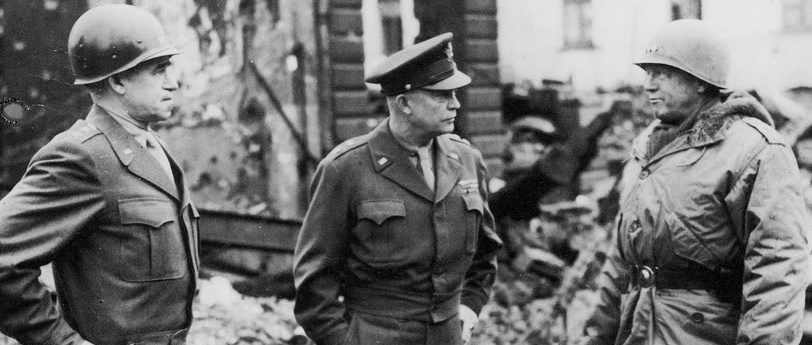
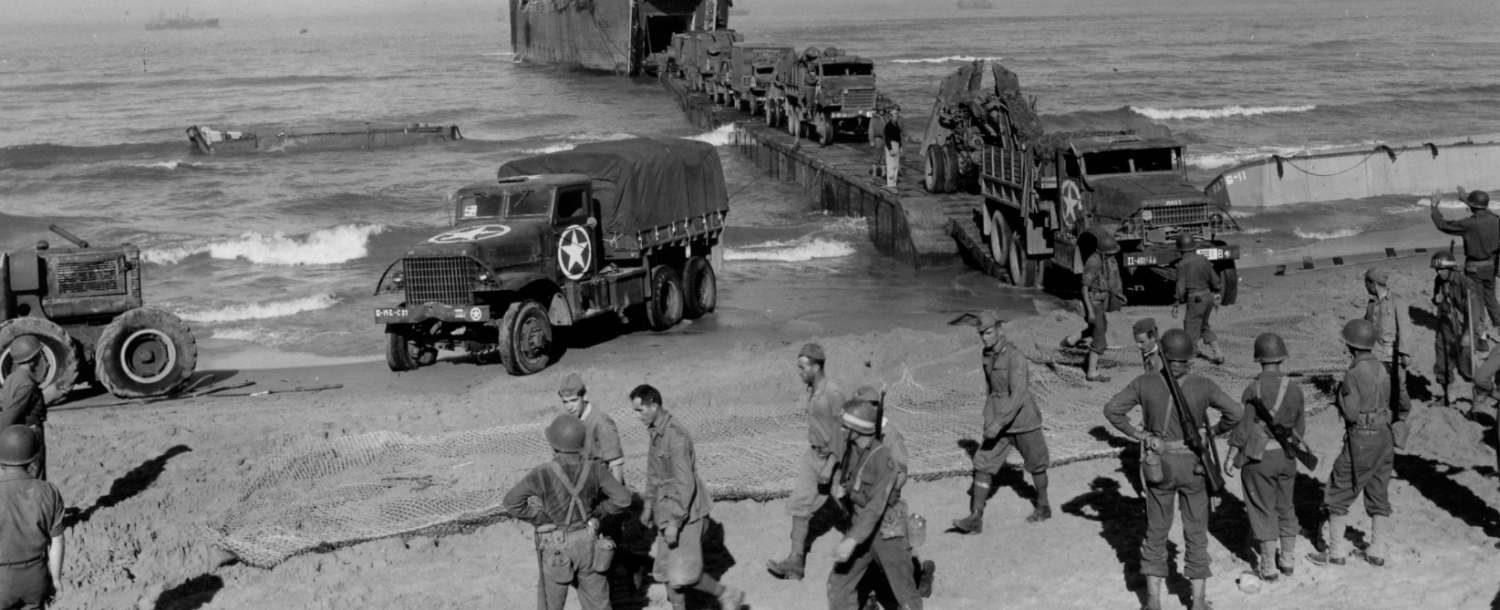
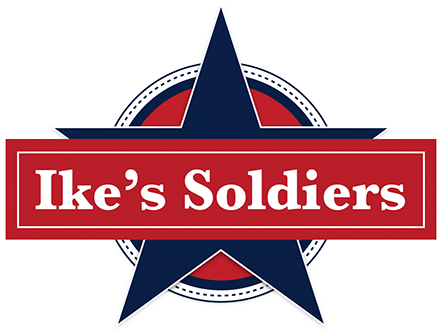
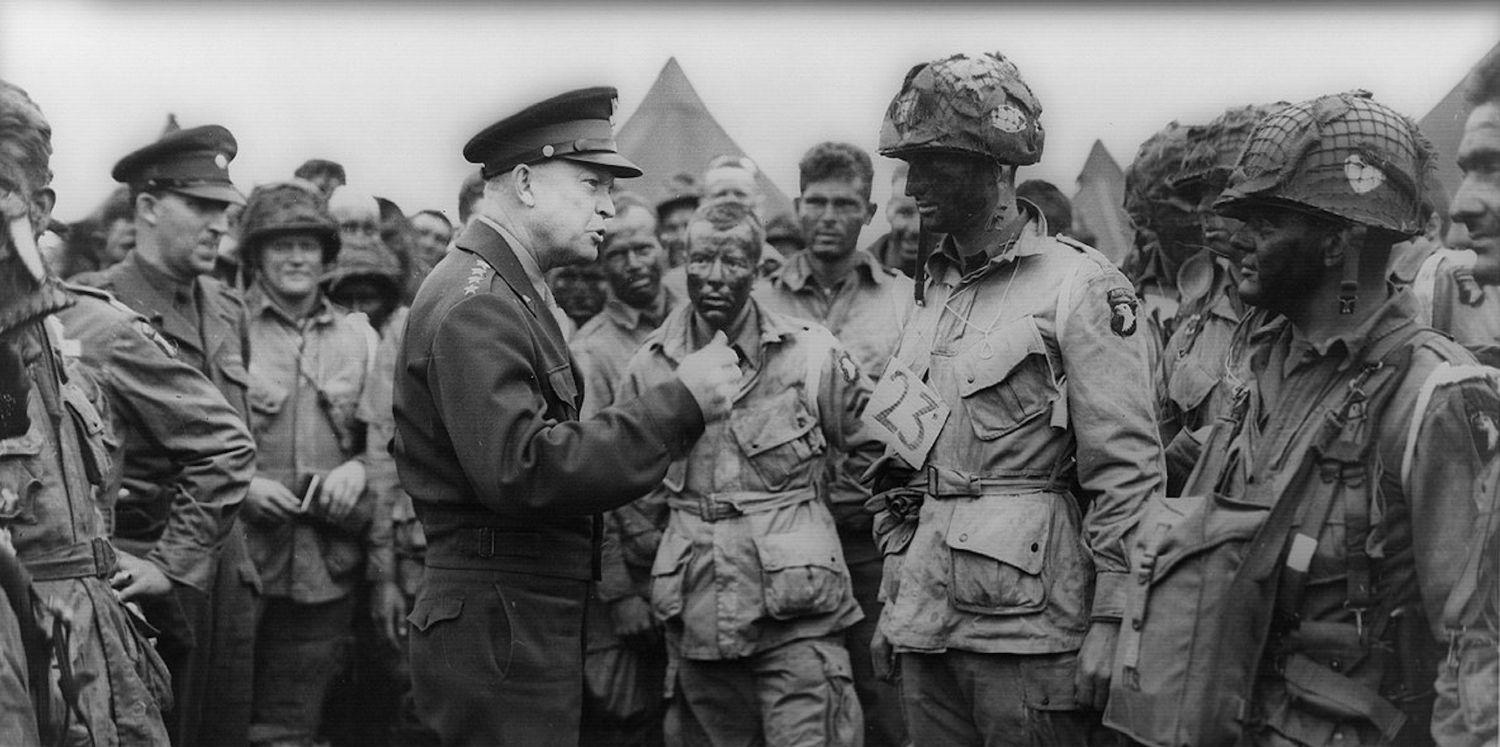



 Eisenhower Foundation
Eisenhower Foundation
